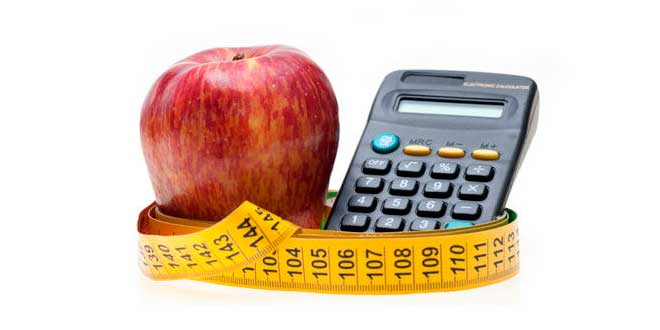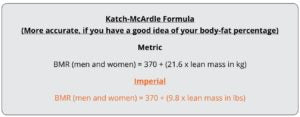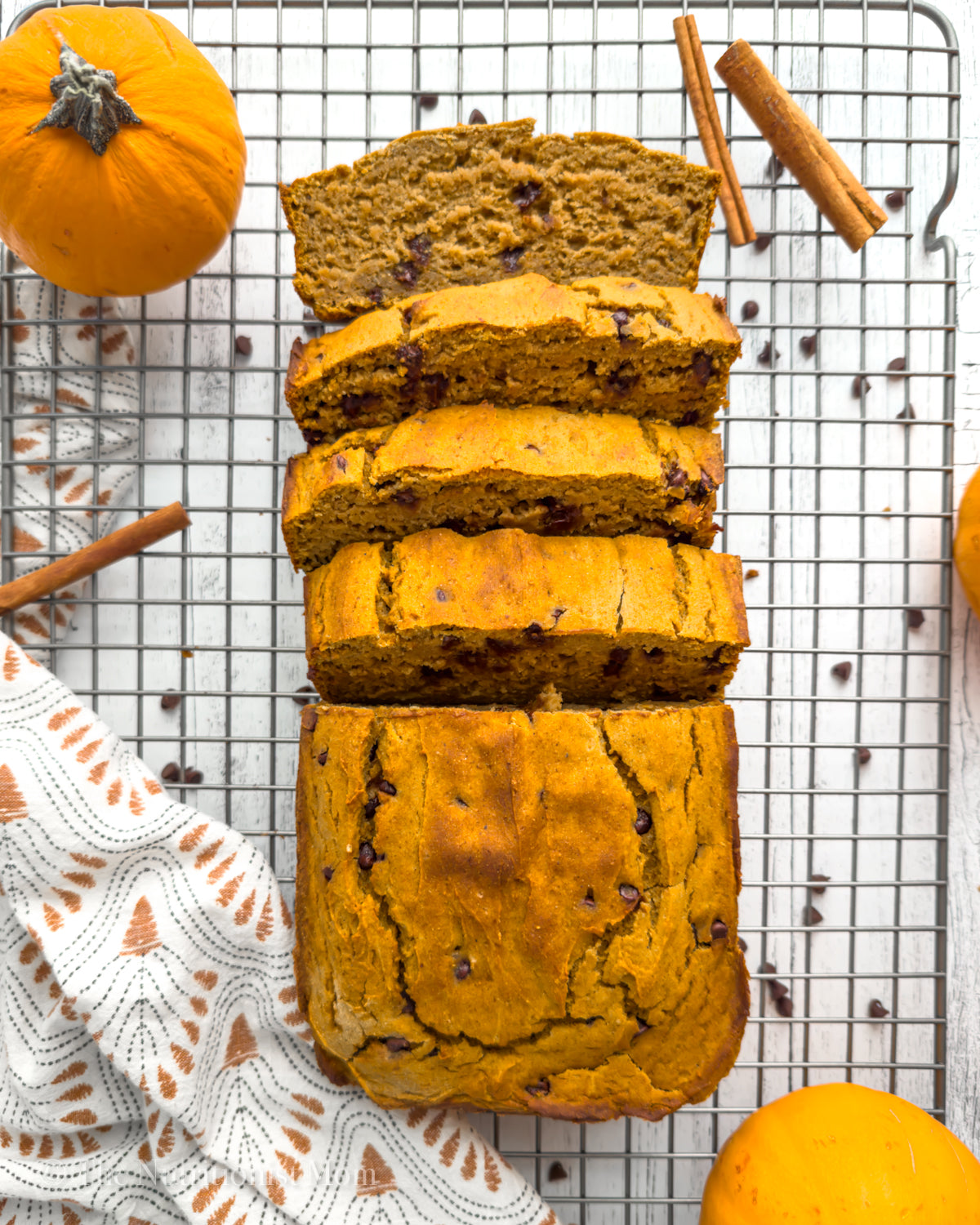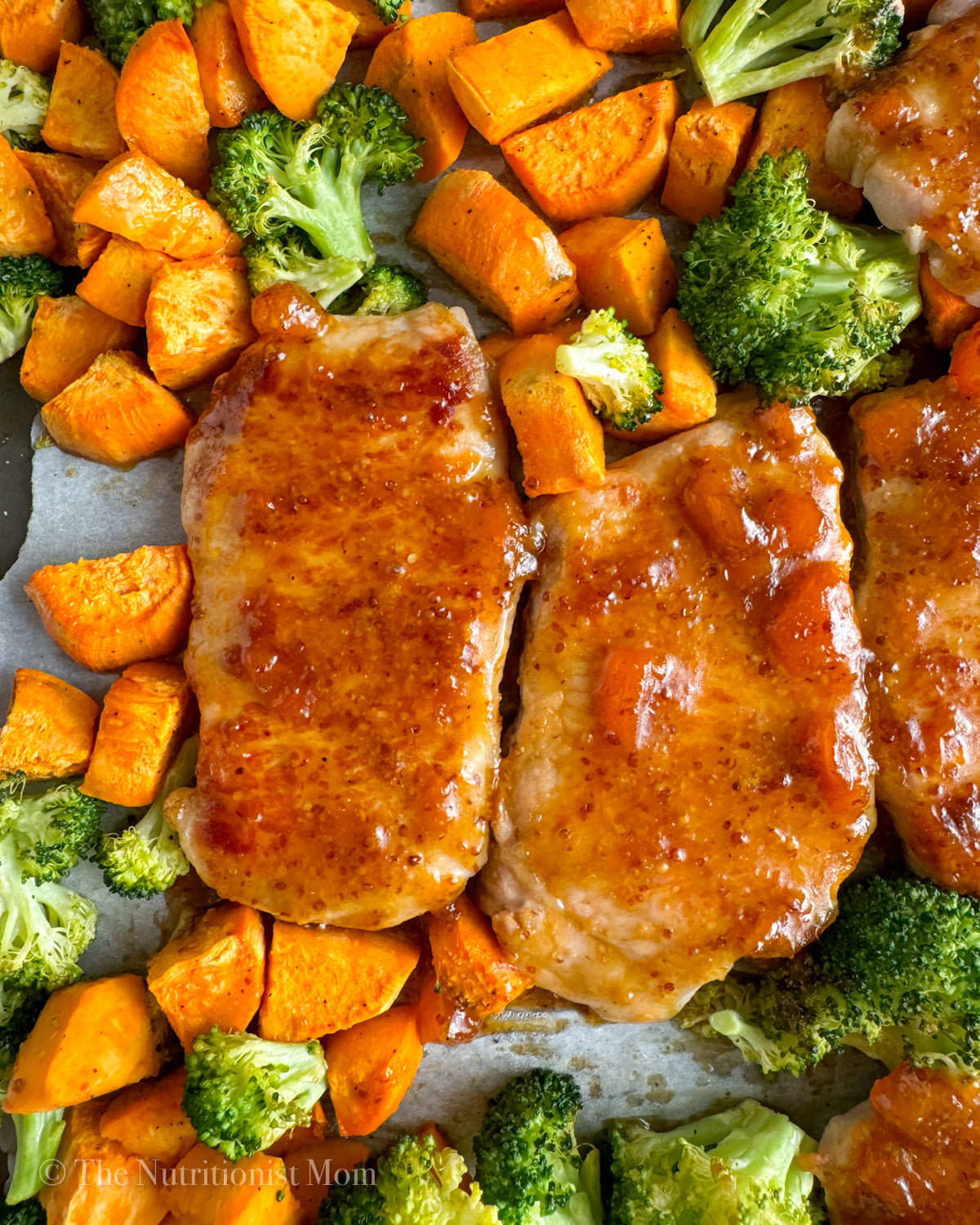HOW MANY CALORIES DO YOU NEED?

Although calorie counting is often disregarded or even shunned as a means of attaining a healthy weight, calorie balance remains the number one factor affecting weight loss or gain. The reason so many people avoid the concept of calorie balance is because they fail to understand the metabolism’s ability to adapt and the role of hormones. There’s a lot more to it than caloric deficit for weight loss, caloric surplus for weight gain, though these principles hold true to a certain extent.
Let’s look at professor Mark Haub’s famous “Twinkie Experiment.”1 For 10 weeks he ate mostly junk food (Twinkies, Oreos, Doritos, various Little Debbie snack cakes, a scattering of veggies, and one packaged protein shake per day), all while maintaining a deficit of 800 calories per day. Professor Haub not only lost 27 pounds in 10 weeks, he also dropped body fat, lowered his blood lipids and bad (LDL) cholesterol, and increased his good (HDL) cholesterol. If this sounds like a dream diet to you, keep in mind, this was only a 10-week experiment, so we don’t know the health issues that might arise long-term. Eating this way wouldn’t be considered “healthy” by any means, but it does show that the caloric deficit can outweigh even horrible food choices!

With our nation’s obesity epidemic and the debilitating health issues surrounding it, it seems foolish to ignore the most effective tool we have for manipulating weight. Just by losing weight, many people can improve blood triglycerides and heart health, reduce their risk of diabetes and cancer, and live a longer, more fulfilling life.
On the flipside, consuming too few calories (either unintentionally or by restricting intake), may cause hormone imbalances, inability to lose stubborn fat or gain muscle, poor training performance, infertility, compromised immune function, nutritional deficiencies, and more.
It’s time for some simple, straightforward steps to determine how many calories you need to maintain your current weight, strip fat, or pack on lean mass, depending on the stage of your fitness journey.

Calorie Needs for Weight Maintenance
The first step is to figure out how many calories you need to maintain your current weight based on your physical stats and activity level. Don’t worry, we will get to gaining muscle and losing fat in a minute.
“Calorie needs” are referred to by many names: basal metabolic rate (BMR), resting metabolic rate (RMR), resting energy expenditure (REE), estimated energy expenditure (EEE), total energy expenditure (TEE), and total daily energy expenditure (TDEE). All these different terms can be confusing, so let me explain.
Basal metabolic rate (BMR), resting metabolic rate (RMR), and resting energy expenditure (REE) mean essentially the same thing, which is how much energy (calories) you burn at complete rest. Think of BMR as the number of calories necessary to sustain your various bodily systems: nervous, digestive, circulatory, endocrine (hormones), reproductive, and so on. For the sake of this article, we will use basal metabolic rate (BMR). BMR does not include calories needed to support daily activities or exercise.
Estimated energy expenditure (EEE), total energy expenditure (TEE), and total daily energy expenditure (TDEE) are all fancy names for much total energy (calories) you burn in a day. This includes calories burned in daily activities like laundry or driving, as well as calories burned purposefully exercising. For the rest of this article, we will refer to your total daily calorie needs as total daily energy expenditure (TDEE).
You may have also heard of the thermic effect of food (TEF), which is calories burned breaking down the foods you eat; non-exercise activity thermogenesis (NEAT), which is calories burned in subconscious movement like fidgeting; and non-exercise physical activity (NEPA) which is calories burned in daily activities outside of purposeful exercise. These factors will be calculated as part of your TDEE, so don’t worry about them too much.

Lean body mass (muscle mass) is the chief determinant of calorie needs, more so than total body weight, age, height, or gender. This holds true not just for bodybuilders, but also for those underweight, overweight or obese.2-4 The most up-to-date calorie needs equation using lean body mass is the Katch-McArdle equation.5 The popular Mifflin-St. Jeor equation doesn’t account for lean body mass, but is still accurate (within 10%) for “most” people.6 I personally don’t use the Mifflin equation because it’s easy to estimate lean body mass, as I’ll show you in a minute.
Both equations have shortfalls and are only an estimate of calorie needs. Katch-McArdle fails to account for total body weight, age, height, or gender; while Mifflin-St. Jeor leaves out lean body mass. If you really want to cover your bases, you can calculate your BMR using both equations and take the average of the two! Here’s an online calculator you can use to do that: http://www.freedieting.com/tools/calorie_calculator.htm
For the sake of this article, we will use the Katch-McArdle equation, which is well-suited for those who aren’t obese and have a decent amount of muscle. Remember that BMR is how many calories you’d burn lying in a hospital bed sustaining vital functions, and does not include daily activities or exercise (we’ll get to those in a minute).
Here’s the equation:

To determine BMR, you first need to know your lean body mass, which is your total weight minus body fat (also known as “fat free mass”). If you have a somewhat accurate estimation of body fat percentage and your current weight, you have everything you need to figure out your lean body mass!
There are two practical and inexpensive methods for estimating body fat percentage. The first method is to measure the narrowest part of your waist, the widest part of your hips, and your neck just below your voice box; then plug your measurements into the US Navy Body Fat Calculator. The US Navy method is accurate within 4%, but does tend to overestimate body fat percentage.7,8
You can also use a chart like the one below to visually estimate your body fat percentage:

Even if your body fat estimation isn’t exact, it’s more accurate than ignoring body fat percentage altogether. For example, someone weighing 150 lbs. with 10% body fat needs about 2,0000 calories per day, while someone at the same weight with 30% body fat only needs about 1,700 calories per day. As you can see, having a rough idea of your body fat percentage can really narrow down your calorie needs.
For the sake of this example, let’s say you weigh 150 lbs. and are around 30% body fat.We now need to know your lean body mass, or “fat free mass.” Calculating this is super easy! If you are 30% body fat, then you are 70% “fat free mass.” Using simple math, 70% of 150 lbs. (0.7 x 150) equals 105 pounds of “fat free mass” or lean body mass.
Now, plug your lean body mass into the Katch-McArdle equation to calculate your basal metabolic rate (BMR):
BMR = 370 + (9.8 x lean body mass in pounds)
BMR = 370 + (9.8 x 105)
BMR = 370 + (1,029)
BMR = 1,399 calories
In this example, your BMR would be about 1,400 calories. Since BMR is just the calories needed to sustain vital bodily functions and nothing else, you now need to factor in daily activities and exercise.To do this, multiply BMR by an activity factor to determine total daily energy expenditure (TDEE).
Use this chart to determine your activity level:
| Activity Factor | Description |
| BMR x 1.1-1.2 |
|
| BMR x 1.3-1.4 |
|
| BMR x 1.5-1.6 |
|
| BMR x 1.7-1.8 |
|
| BMR x 1.9-2.5 |
|
Let’s just say you have a sedentary job and work out 4-6 hours per week. You would use an activity factor of 1.5 (the low end) since you’re not exercising a full hour each day. Multiply your BMR by your activity factor (AF) to get your total daily calorie burn or TDEE.
In this example:
TDEE = BMR x AF
TDEE = 1,400 calories x 1.5
TDEE = 2,100 calories
This tells approximately how many calories you would need to maintain 150 lbs. and 30% body fat with a sedentary job and 4-6 hours of exercise per week. Of course, use your own stats and activity level to figure out your true calorie needs (this was just an example).

Calorie Needs for Pregnancy and Breastfeeding
Now ladies, if you’re pregnant in your first trimester, add 100 calories to your TDEE. If you’re in your second trimester, add 200 calories to your TDEE, and if you’re in the third, add 300 calories (don’t take “eating for two” literally!). For breastfeeding during the first 6 months, add 500 calories to your TDEE. After 6 months, you only need an additional 300 calories, as baby will probably be consuming other foods besides breastmilk.
Calorie Needs for Fat Loss
To lose one pound, you need to create an energy deficit of about 3,500 calories – either by restricting intake, adding exercise, or both.9 The main reason so many people fail at this (aside from under-estimating intake or over-estimating calories burned), is due to the metabolic adaptation that happens when you cut calories.
You see, anytime you’re in a calorie deficit for more than a day or two, your metabolism actually slows down to some extent. This “slowdown effect” is far more drastic with chronic dieting and extreme crash diets.10-12 If you cut calories by 25% or so (a modest deficit), your metabolic rate might only decline by 6% over a 6-month period.13 However, with a calorie deficit of 50% or more (starvation-like conditions), your metabolic rate could drop as much as 40% over a 6-month period.14
Particularly when you subject yourself to extreme calorie restriction, your body responds to the perceived “famine” by down-regulating metabolic rate as a survival mechanism (commonly referred to “starvation mode).

In addition, dieting longer than 6 months (and even shorter periods of extreme dieting) can result in several undesirable metabolic adaptations:
- Reduced T3 thyroid hormone which effectively slows your metabolism down!15
- Elevated cortisol which causes excess belly fat, muscle loss, elevated blood sugar and insulin suppression, increased appetite, immune suppression, GI distress, high blood pressure, reduced sex hormones and fertility (has also been linked to insomnia, chronic fatigue syndrome, thyroid disorders, dementia, depression)16-18
- Decreased leptin which is a key appetite-suppressing fat-burning hormone18
- Increased ghrelin which is an appetite-stimulating hormone (culprit for ramped up cravings and hunger)18
This explains why so many people who follow “crash diets” end up gaining every ounce back and more! All too often people diet hard, lose a bunch of weight, then return to their normal way of eating (possibly even healthier), only to gain it back faster than ever due to a slowed metabolism and compromised hormone levels.
To avoid all this and achieve sustainable fat loss, I suggest a modest calorie deficit (20-30% of TDEE) for no longer than 6 months at a time. For example, if you need 2,100 calories to maintain weight, consume between 1,470-1,680 calories for fat loss. If you’re already at 70% of your TDEE and hit a plateau, it’s better to add exercise rather than cut calories further. This can help minimize metabolic slowing (though it’s still not optimal and should only be used for competition prep).
I am also a huge advocate of “re-feed” days and “cyclical dieting.” Re-feed days are beneficial for keeping metabolic rate up while dieting, lowering cortisol levels, and boosting leptin levels (all of which aid fat loss).19 A basic re-feed schedule would be to restrict calories six days of the week with one day slightly above maintenance calories, the extra calories coming from carbs. If significantly overweight or obese, you may only need a re-feed every two weeks; if you’re already lean trying to lose the last 5 lbs., you might want to re-feed a couple times per week.
“Cyclical dieting” is simply alternating between periods of calorie restriction and maintenance.20 Again, it’s best to limit your dieting phases to 4-6 months at a time (with re-feeds), as chronic dieting can lead to the negative metabolic consequences mentioned earlier. I will typically have my clients reverse-diet (gradually add calories back up to maintenance) and do a “building” phase for a few months in between cutting phases.
Calories Needs for Weight Gain
What about healthy weight gain? Well, my guess is, you’re trying to gain muscle, not fat, am I right? At best, the natural bodybuilder doing everything perfectly can only put on about 2 lbs. of muscle per month, or half a pound per week.21 Since an increase of 3,500 calories yields approximately one pound of weight gain, half a pound gain would require an additional 1,750 calories per week, or adding 250 calories to your daily intake.
Please understand, it’s impossible to ensure that every extra calorie you consume goes to increase muscle mass with zero increase in body fat. If only nutrient partitioning were that perfect! To truly “max out” lean mass gains (i.e., put on the most amount of muscle possible over a period of time), you should be willing to accept a small amount of fat gain. This is especially true if you are transitioning out of a very lean state, such as post-competition.
Don’t worry, we are still talking snail’s pace weight gain! The goal is about 0.5-0.75 lb. per week for lean mass gains (though you may gain faster at first if you started out extremely lean or glycogen-depleted). To achieve this goal, start by adding 300 calories to your daily current intake (or start more cautiously at 200 calories if you prefer), and maintain that intake until you plateau (stop gaining). If this happens, add another 200-300 calories and repeat. I recommend having body fat measurements every 1-2 weeks during this process to make sure lean mass steadily increases, while body fat percentage barely creeps up. A good rule of thumb is no more than 5% increase in body fat for every 16 weeks of muscle building.
Again, I recommend a cyclical approach to building and cutting to optimize anabolic hormones and minimize unwanted fat accumulation. For example, 4-6 months of modest caloric deficit for fat loss, followed by 4-6 months of graduated caloric surplus for lean mass gains. When done correctly, this approach will yield considerable lean mass gains, all while staying pretty darn lean!

Adjusting Your Calorie Intake
These guidelines should give you a solid starting point, but always listen to your body! Your calorie needs may be slightly higher or lower than your calculations, and you will likely need to adjust your intake based on your body’s response.
For example, if you are trying to shed some fat but are losing less than a pound per week, or if you’re trying to add lean mass but gaining too much fat, cut 100 calories from your daily intake. Measure your results after one week, and adjust again if needed (always small increments!). On the flip-side, if you’re consistently losing over two pounds per week (potentially losing muscle), or failing to measure any increase in muscle mass while attempting a lean bulk, add 100 calories to your daily intake and track your results.
Last but not least, if you are maintaining well below your calculated TDEE (for example, your calculated TDEE was 2,100 calories but you’ve been maintaining at 1,600 calories or less), this tells me you’ve been dieting or under-eating long enough to significantly slow your metabolism. In this case, the best solution is to reverse-diet (gradually add calories) until you reach normal maintenance levels, a method I have detailed in this article.

Be very patient when making changes! Just because you don’t see results in week one, doesn’t mean you should start one of those extreme fad diets or start eating everything in the fridge. Anything worthwhile takes time, and this is no different.
I hope you’ve found this article informative and easy enough to understand. If you have questions, feel free to leave a comment below!
No part of this article may be reproduced, copied, modified or adapted, without written permission from Sarah Wilkins. Violation is subject to prosecution by copyright law, and punishable by up to 5 years in Federal prison and a fine up to $250,000.
Sources:
- Vieira, Ginger. “The ‘Twinkie Diet’ Actually Works.” Diabetes Daily, 25 Apr. 2016, www.diabetesdaily.com/blog/oh-dear-the-twinkie-diet-actually-works-268743/.
- Gupta, Riddhidas, et al. “Are Predictive Equations for Estimating Resting Energy Expenditure Accurate in Asian Indian Male Weightlifters?” Indian Journal of Endocrinology and Metabolism, vol. 21, no. 4, 2017, p. 515., doi:10.4103/ijem.ijem_563_16.
- Alexandra M Johnstone, Sandra D Murison, Jackie S Duncan, Kellie A Rance, John R Speakman; Factors influencing variation in basal metabolic rate include fat-free mass, fat mass, age, and circulating thyroxine but not sex, circulating leptin, or triiodothyronine, The American Journal of Clinical Nutrition, Volume 82, Issue 5, 1 November 2005, Pages 941–948, https://doi.org/10.1093/ajcn/82.5.941
- Sabounchi, N S et al. “Best-fitting prediction equations for basal metabolic rate: informing obesity interventions in diverse populations” International journal of obesity (2005) vol. 37,10 (2013): 1364-70.
- McArdle WD, Katch FI, Katch VL. Exercise Physiology. Lippincott Williams & Wilkins; 2009. Available at: https://www.lww.com/webapp/wcs/stores/servlet/product__11851_-1_9012052_Prod-9780781797818.
- Frankenfield, David, et al. “Comparison of Predictive Equations for Resting Metabolic Rate in Healthy Nonobese and Obese Adults: A Systematic Review.” Journal of the American Dietetic Association, vol. 105, no. 5, 2005, pp. 775–789., doi:10.1016/j.jada.2005.02.005.
- Combest, Travis M., et al. “Comparison of Circumference Body Composition Measurements and Eight-Point Bioelectrical Impedance Analysis to Dual Energy X-Ray Absorptiometry to Measure Body Fat Percentage.” Military Medicine, vol. 182, no. 7, 2017, doi:10.7205/milmed-d-16-00344.
- Babcock, Carmen J., et al. “A Comparison of Military Circumference Equations to Skinfold-Based Equations to Estimate Body Composition.” Military Medicine, vol. 171, no. 1, 2006, pp. 60–63., doi:10.7205/milmed.171.1.60.
- “What is the required energy deficit per unit weight loss?” International journal of obesity (2005) vol. 32,3 (2007): 573-6.
- Redman, Leanne M et al. “Metabolic and behavioral compensations in response to caloric restriction: implications for the maintenance of weight loss” PloS one vol. 4,2 (2009): e4377.
- Josephine Connolly, Theresa Romano, Marisa Patruno; Effects of dieting and exercise on resting metabolic rate and implications for weight management, Family Practice, Volume 16, Issue 2, 1 April 1999, Pages 196–201, https://doi.org/10.1093/fampra/16.2.196
- Platte, P. , Wurmser, H. , Wade, S. E., Mecheril, A. and Pirke, K. M. (1996), Resting metabolic rate and diet‐induced thermogenesis in restrained and unrestrained eaters. Int. J. Eat. Disord., 20: 33-41. doi:1002/(SICI)1098-108X(199607)20:1<33::AID-EAT4>3.0.CO;2-5
- Heilbronn LK, de Jonge L, Frisard MI, et al. Effect of 6-Month Calorie Restriction on Biomarkers of Longevity, Metabolic Adaptation, and Oxidative Stress in Overweight IndividualsA Randomized Controlled
- Keys, A., Brožek, J., Henschel, A., Mickelsen, O., & Taylor, H. L., The Biology of Human Starvation (2 volumes), University of Minnesota Press, 1950.
- Luigi Fontana, Samuel Klein, John O. Holloszy, Bhartur N. Premachandra; Effect of Long-Term Calorie Restriction with Adequate Protein and Micronutrients on Thyroid Hormones, The Journal of Clinical Endocrinology & Metabolism, Volume 91, Issue 8, 1 August 2006, Pages 3232–3235, https://doi.org/10.1210/jc.2006-0328
- Tomiyama, A Janet et al. “Low calorie dieting increases cortisol” Psychosomatic medicine vol. 72,4 (2010): 357-64.
- “Cortisol – Its Role in Stress, Inflammation, and Indications for Diet Therapy.” Today’s Dietitian, www.todaysdietitian.com/newarchives/111609p38.shtml.
- Trexler, Eric T, et al. “Metabolic Adaptation to Weight Loss: Implications for the Athlete.” Journal of the International Society of Sports Nutrition, vol. 11, no. 1, 2014, p. 7., doi:10.1186/1550-2783-11-7.
- Fitschen, Peter, and University of Illinois. “Refeed Days: What Has Science Shown?” Biolayne, 26 Feb. 2016, biolayne.com/articles/nutrition/refeed-days-what-has-science-shown/.
- Byrne, N M et al. “Intermittent energy restriction improves weight loss efficiency in obese men: the MATADOR study” International journal of obesity (2005) vol. 42,2 (2017): 129-138.
- “General Philosophies of Muscle Mass Gain.” Bodyrecomposition, 12 July 2017, bodyrecomposition.com/muscle-gain/general-philosophies-of-muscle-mass-gain.html/.
Also in Blog

CHOCOLATE PEANUT PROTEIN CANDY BARS (VEGAN)

PUMPKIN CHIP PROTEIN BREAD (GLUTEN FREE, DAIRY FREE)
This Pumpkin Chip Protein Bread has a rich, tender texture full of pumpkin spice and chocolate chips (no dry protein bread here). The kids and I can't get enough! Best of all, it's gluten-free, dairy-free, nut-free and easily made egg-free and vegan.




